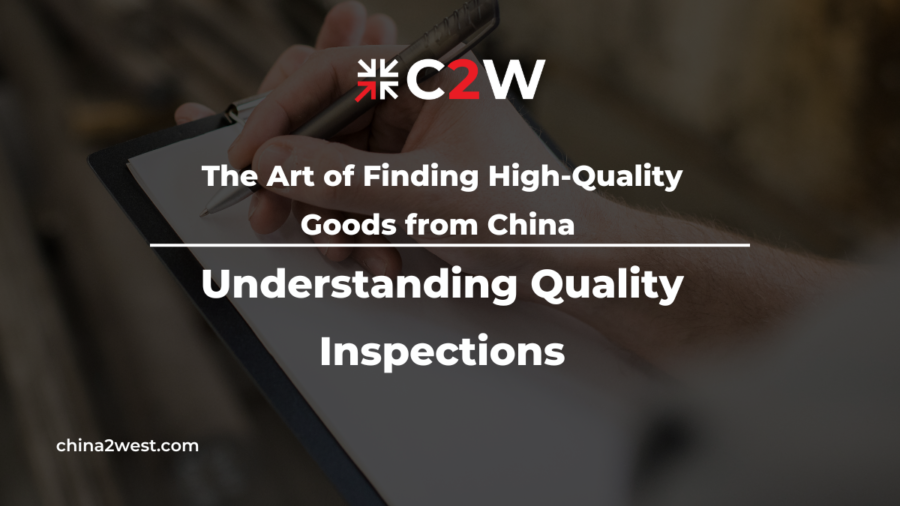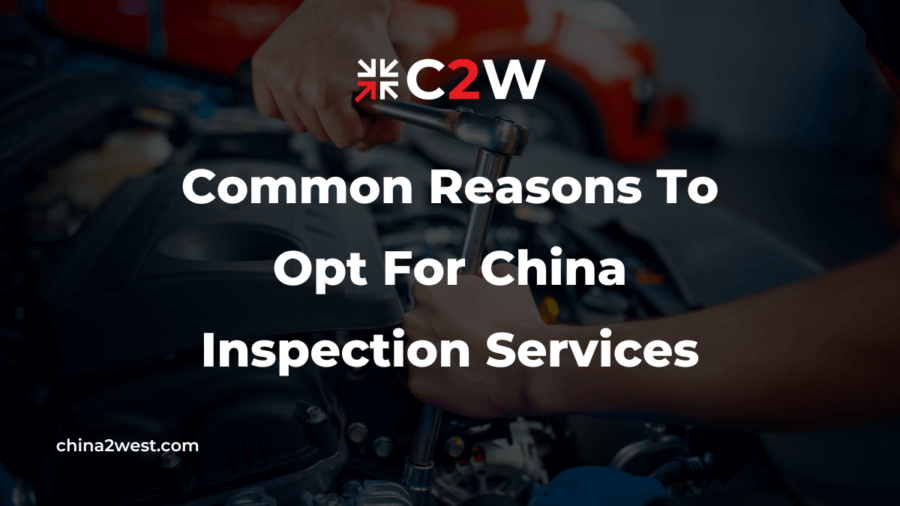In today’s global marketplace, sourcing products from China has become a cornerstone of countless businesses and industries worldwide. The allure of competitive pricing and a vast array of manufacturing capabilities makes China an attractive destination for businesses looking to import a wide range of goods.
However, amidst the vast sea of suppliers and manufacturers in China, the pursuit of high-quality products can sometimes feel like searching for a needle in a haystack. This is where the art of quality inspections comes into play, serving as a crucial compass in navigating the complex world of international trade.
In this blog post, we will discuss the art of finding high-quality goods from China and how understanding quality inspections can help you make sure you receive the best possible products.
Why Quality Inspection is Important in China
Quality inspection is an essential part of the sourcing process when sourcing products from China. Why are they so important? Well, when you’re purchasing products from another country, you want to make sure that they meet your expectations in terms of quality, safety, and compliance with standards. China is known for its vast manufacturing industry, but unfortunately, not all suppliers prioritize quality. This is where quality inspection comes in.
By conducting thorough quality inspections, you can ensure that the products you receive are up to par. These inspections involve checking for defects, verifying the accuracy of specifications, and testing the products for functionality and safety. This process helps to identify any issues or discrepancies before the goods are shipped to you. It saves you from the hassle of dealing with faulty or non-compliant products, which could potentially harm your business reputation and cost you valuable time and money.
Additionally, quality inspection also acts as a way to hold suppliers accountable. By conducting this inspection, you demonstrate to the suppliers that you take quality seriously and that you expect them to deliver products that meet your requirements. This can encourage suppliers to maintain high standards and improve their overall quality control processes.
Different Types of Quality Inspection
Understanding the different types of quality inspections is crucial when it comes to buying goods from China. Each type serves a specific purpose in ensuring that the products meet your standards and requirements.
1. Pre-production Inspection
This inspection takes place before the manufacturing process begins. It involves checking the raw materials and components to ensure they meet the specified quality standards. By catching any potential issues at this early stage, you can prevent defects from being incorporated into the final products.
2. During-production Inspection.
As the name suggests, this inspection occurs while the manufacturing process is ongoing. It involves checking the products at various stages of production to ensure that they meet the required quality standards. This type of inspection helps identify any deviations from the agreed-upon specifications, allowing you to address these issues before they become major problems.
3. Pre-shipment Inspection
This is the final check conducted before the goods are shipped to you. It involves a comprehensive examination of the products to ensure they are in perfect condition, meet the specified requirements, and are free from defects. This inspection is crucial in ensuring that you receive high-quality products that are ready for distribution.
Tips for Conducting a Quality Inspection in China
When it comes to conducting a quality inspection in China, there are several tips and best practices that can help ensure a successful outcome. Here are some key tips to keep in mind:
1. Plan in Advance
Before conducting the inspection, make sure to establish clear inspection criteria and expectations. This includes specifying the standards, requirements, and specifications that the products must meet. By planning ahead, you can provide clear instructions to the inspection team and avoid any misunderstandings or miscommunication.
2. Choose the Right Inspection Team
It’s crucial to work with experienced and qualified inspectors who understand the industry standards and have expertise in your specific product category. Consider partnering with a reputable third-party inspection company that can provide trained inspectors and ensure impartiality.
3. Be Present During the Inspection
Whenever possible, try to attend the inspection in person or assign someone from your team to be present. This allows you to provide real-time feedback and address any concerns or questions that may arise during the inspection. It also shows the supplier that you take quality seriously and are actively involved in the process.
4. Conduct Random Sampling
To ensure a representative sample, it’s important to conduct random sampling during the inspection. This involves selecting random units from the batch for testing and inspection. Random sampling helps to avoid bias and provides a more accurate assessment of the overall quality of the goods.
5. Document the Inspection
Throughout the inspection process, make sure to take detailed notes, photographs, and videos. This documentation can serve as evidence and support in case any disputes or issues arise later. It also allows you to keep a record of the inspection results for future reference.
6. Communicate Effectively
Maintain open and clear communication with the inspection team and the supplier throughout the inspection process. This includes providing feedback, asking questions, and requesting clarification when needed. Effective communication helps ensure that everyone is on the same page and can address any issues or concerns promptly.
7. Follow Up on The Inspection Findings
Once the inspection is complete, it’s important to review the findings with the supplier. This includes discussing any non-conformities or areas of improvement. By following up on the inspection findings, you can work collaboratively with the supplier to resolve any issues and ensure that future shipments meet your quality standards.
Benefits of Quality Inspection in China
We hope learning how to ensure a quality inspection in China has been helpful to you. Working with manufacturing in China comes with a huge list of benefits as long as you can avoid the disadvantages that sometimes come along with it. The right quality inspection services in China can solve this problem and help you enjoy efficient manufacturing.
With 18 years of experience in the Greater Bay Area in Southern China, China 2 West offers reliable and professional quality inspection services to make sure the products you make, and ship comply with the international quality standards you have come to expect. To learn more about how to make sure you get only the highest quality of goods from Chinese manufacturing companies or to speak with experts in quality inspection of Chinese goods and processes, feel free to contact us today and get in touch with us here at any time!




